YOUR CART
- No products in the cart.
Subtotal:
$0.00
BEST SELLING PRODUCTS

Have you ever been struck by the architecture, the colours or other visual elements of a place and wanted to record it in ways other than photography? Well, textile art can certainly do that, but …. knitting?
Jake Henzler had already designed and published knitting patterns for cute story characters when he took a year out from his teaching job in Australia to work in Copenhagen. Struck by the vibrant, painted buildings in the city and the colourful yarns in a shop he used to visit, he initially wanted to knit every building he saw. Whittling it down to a few of his favourites, he trialled and tested and eventually designed his Copenhagen Building Blocks pattern and knitted a commemorative blanket, which took his career to a new level. His pattern has been sold on the yarn lovers’ website Ravelry and knitted into a housecoat and a pair of socks, as well as blankets.
Jake told us how he develops his designs and how they now include seasonal garlands, baby blankets and a range that he named You Can Get Everything You Want.
I started knitting when I was about 19. My mum had always been a knitter, so I’d seen her making garments from when I was very young and I mucked around making bits and pieces. Mum taught me how to do knit stitch, which is all I used for a long time. I taught myself to purl when I eventually needed to, and most other knitting techniques have been self-taught from internet tutorials.
My patchworking skills have all been developed in informal workshops with a friend’s mum, Elizabeth Shelton-Agar, @sewelizabeth on Instagram. She is a complete master of the craft and has taught me a lot about combining pattern, shape and colour. I don’t do much patchwork quilting on a regular basis, but I use a lot of the same principles in designing knitting patterns.
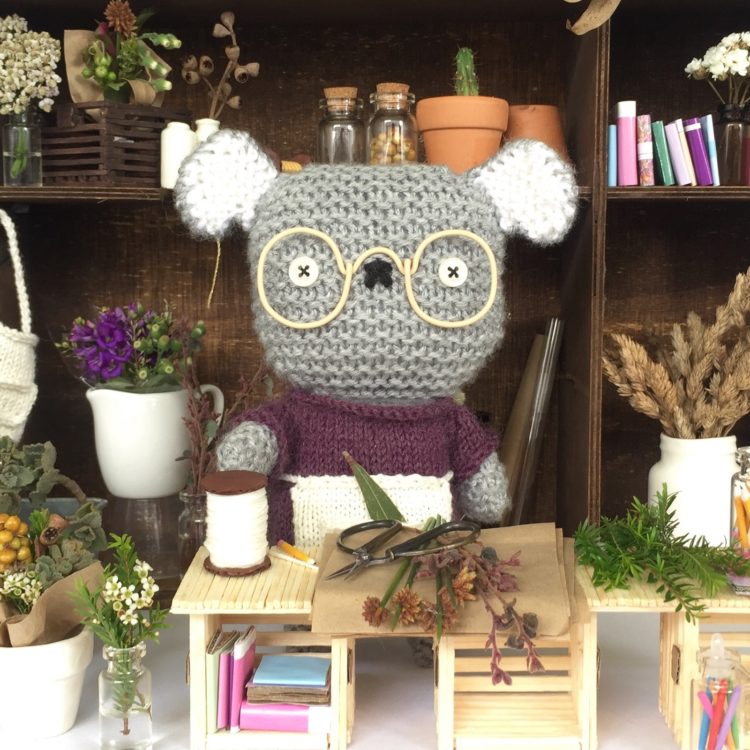
I began selling some small knitted characters online around 2004 and, the following year, exhibited pieces in galleries in Newcastle, New South Wales, Australia while I was studying at university. My job is teaching secondary school English, so my knitting and art practice has always been a way to keep a creative outlet open alongside a hectic work schedule.
My designs were picked up by a knitting pattern publisher, Australian Country Spinners, who invited me to write a booklet of character patterns aimed at beginner knitters. This became a print publication called Little & Friends, which was sold in yarn stores in Australia.
In 2017 I took a break from my teaching job in Australia and spent a year working as a substitute teacher at an international school in Copenhagen. It gave me opportunities to travel to a few other countries, but it also meant I had more time to consider creative projects.
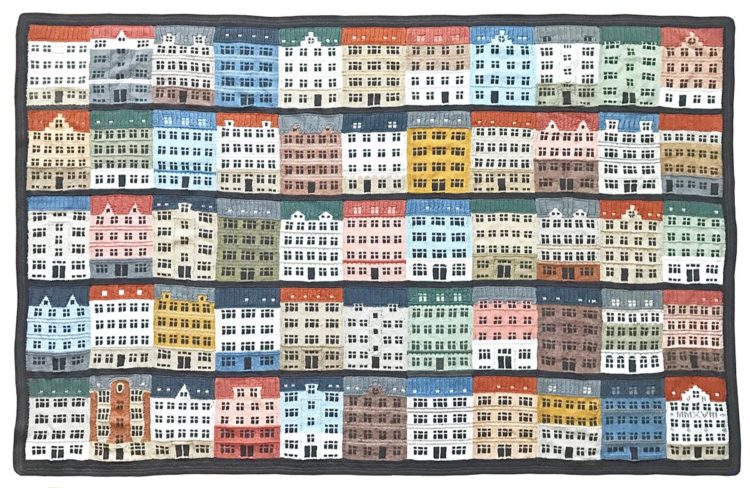
In my spare time in Copenhagen, I would take trips to yarn stores around the city to look at their ranges, but the one where I always spent the most time was a homewares chain called Søstrene Grene. Their range of cotton colours was incredible.
I decided that I wanted to make a blanket that would commemorate my year there. My patchwork quilting often involved choosing fabrics and designs that personalise the finished product, and I was keen to transfer some of these skills across to knitted blocks.
Initially, I wanted to knit every building in the city – anything that had some significance to me.
The first one I attempted was the shopfront of a tea store, but it was hard to capture the level of detail without going very large scale. The next test knit was a plain building, which worked and seemed easy enough to adapt into other designs. In the end, I did manage to make a few special buildings, including both of the apartment blocks I lived in.
A couple of years later, I began the Amsterdam piece. The bigger projects take a lot of time, particularly when I’m testing new patterns to make sure the combination of all of the parts work together. In 2021 I completed Grachtenpanden van Amsterdam (made from the Amsterdam Building Blocks patterns) as a commission for a new Dutch cruise-liner. The liner was to sail to Amsterdam regularly and the work would hang on the landing of a central staircase, so it felt appropriate to give the passengers a view of the city.
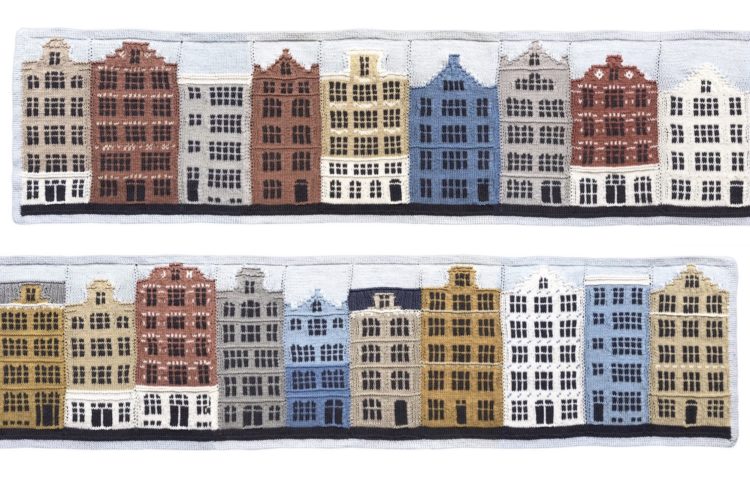
I have also made a fictional building, The Grand Hotel, which pays homage to Wes Anderson’s film The Grand Budapest Hotel and the way that buildings hold stories of our lives. I’m considering working on a piece about Sydney, but it will need to sit with me for a bit longer before I know what might come of it.
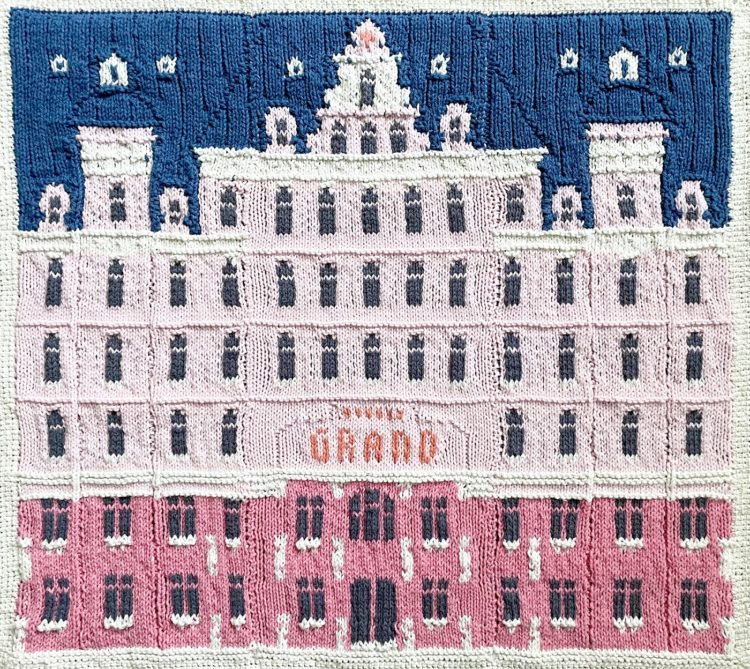
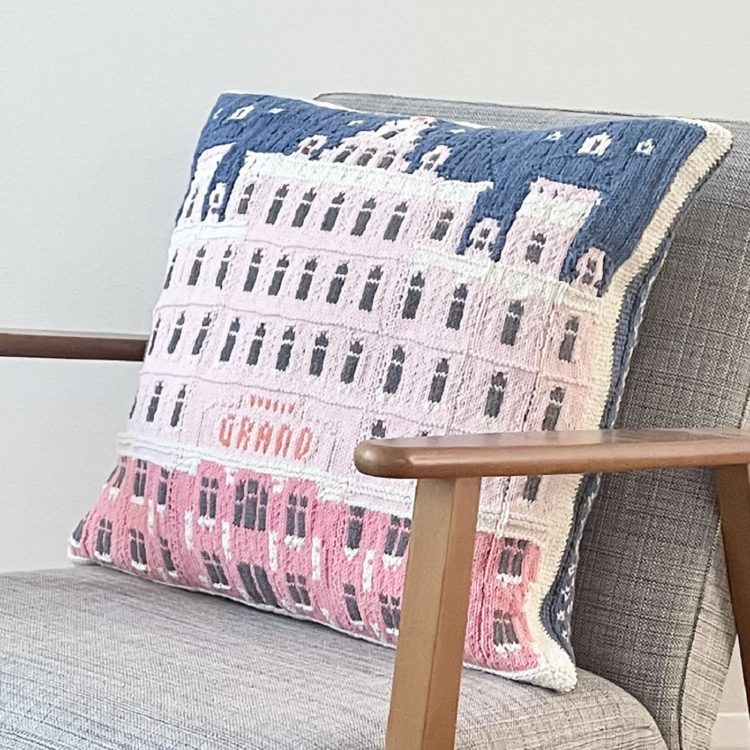
Similarly, for Grachtenpanden van Amsterdam I developed a series of core patterns to operate as adaptable templates that describe an entire city.
The principle of allowing people to reproduce and adapt elements of the pattern to describe their own experiences is central to the work’s purpose.
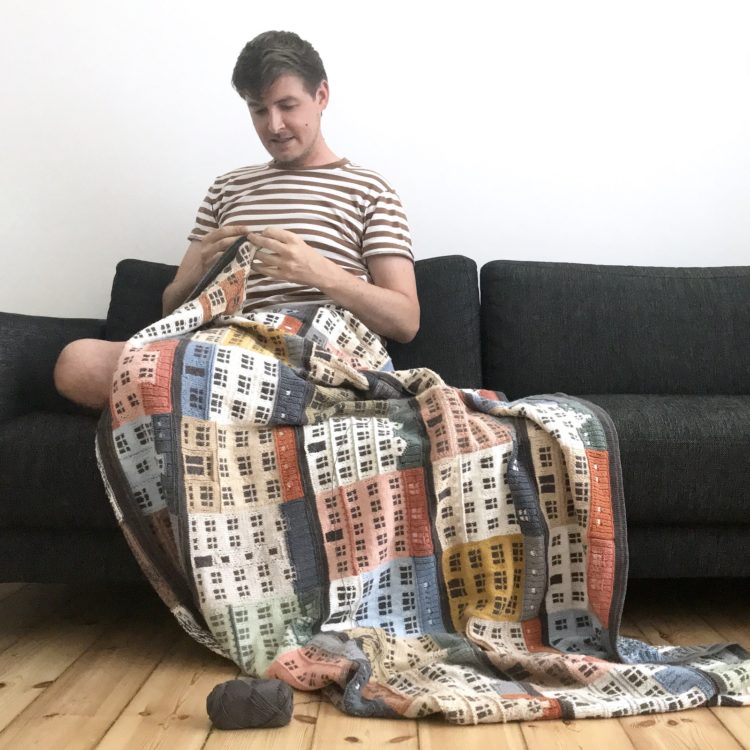
The choice of cotton for Copenhagen Building Blocks was really driven by the wide range of great colours available I saw in Søstrene Grene, but I’ll use any fibre that suits the project. Four-ply cottons are often very bright pastels, presumably because they’re often used to make babywear, but the range at Søstrene Grene included more sophisticated colours, like a washed-out terracotta, olive greens and a dusty blue.
I also experimented a bit with dyeing, fading and staining some colours, which allowed me to create tone variation in the colours I had and create more appropriate colours from brighter options. The cottons I was using were very flexible and cooperative, but the processes used to produce wools and mercerised cottons probably make alterations to their commercial colour much harder.
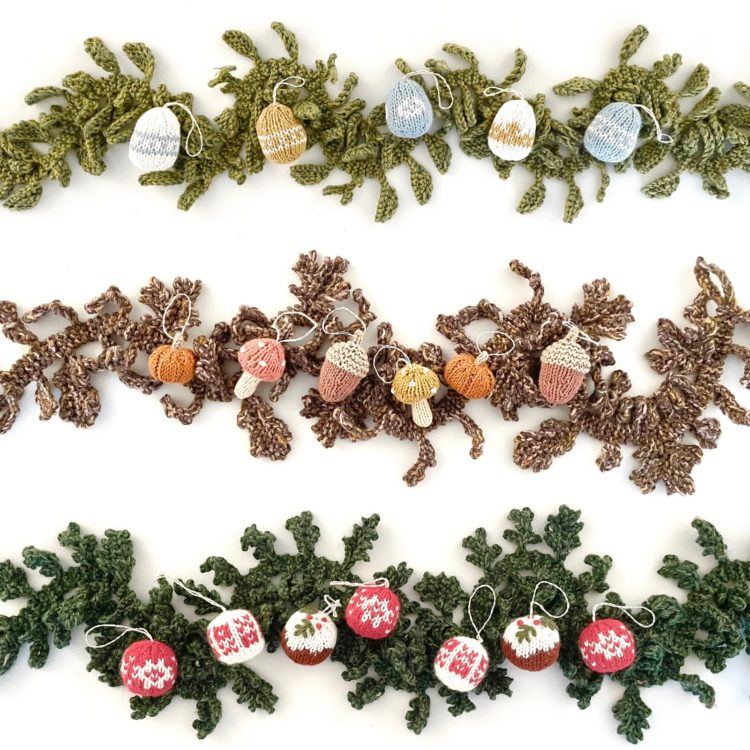
I’ve always loved making Christmas decorations and I have a collection of them that I’ve been growing over the years. It seems a shame to limit these to the Christmas tree, so I started thinking about possible ways of making leafy garlands to hang more from. It took a lot of testing of individual knitted leaf shapes, but eventually, I developed a method of making them one by one all on the same vine. The garlands are knitted in 8-ply yarn but the pattern suggests using two strands of 4-ply in slightly different colours to produce a mottled effect on the leaves, which produces a look that’s a bit more natural.
There were too many possibilities to limit the idea to Christmas garlands, so I developed a few other ideas, such as Easter and autumn themes, using the same method. The decorations were a nice additional element that gives the garlands a bit of purpose. I also like quite comprehensive pattern books with customisable elements, so I wanted to make sure the final product was something I would find appealing as a series of projects.
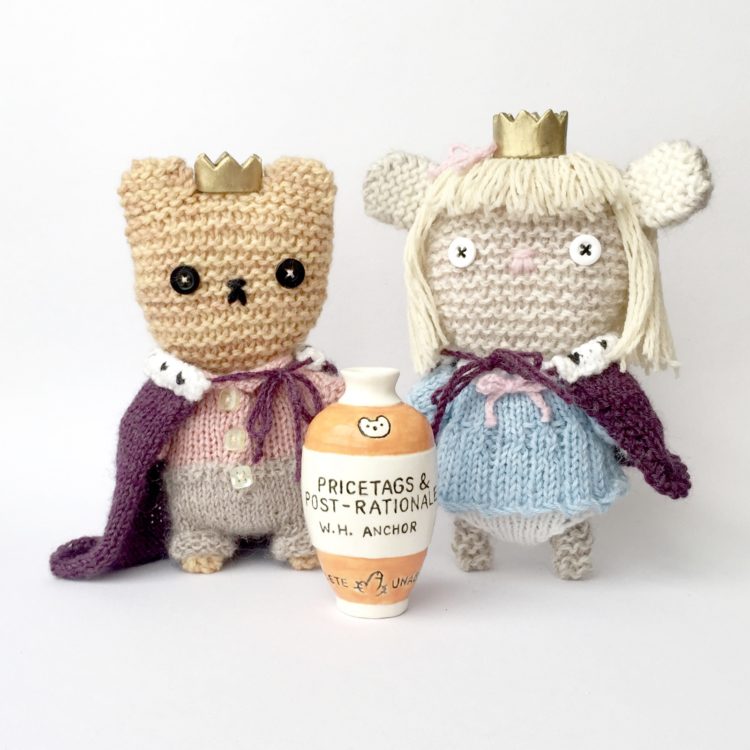
It’s hard to say how my little characters came about specifically. A knitted mouse character that I saw in a design magazine was the inspiration for a lot of the button-eyed animal shapes that I make. Most of the characters are just silly ideas that I decide I want to see as a finished piece and I give them stories, which I post on Instagram. Some are interpretations of characters from film and television (like the Men of Wes) and some are portraits of artists (like my Grayson Perry portrait and Phil Ferguson portrait).
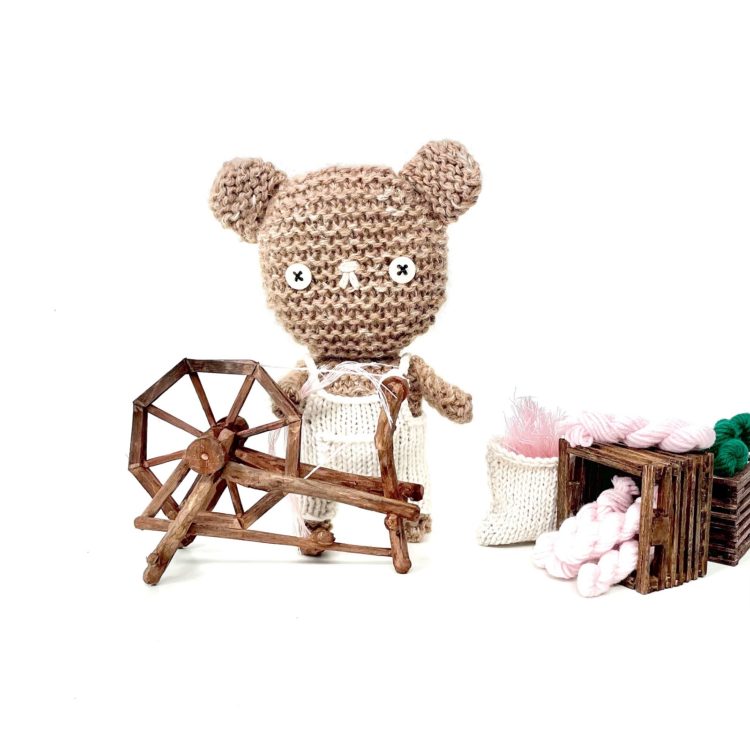
My You Can Get Everything You Want range of characters was in response to Troy Emery’s Park Creature at the Dog Days exhibition at the Maitland Regional Art Gallery in Maitland, New South Wales from April to June 2022, where I worked alongside four other artists in what was part exhibition, part artist residency and part performance.
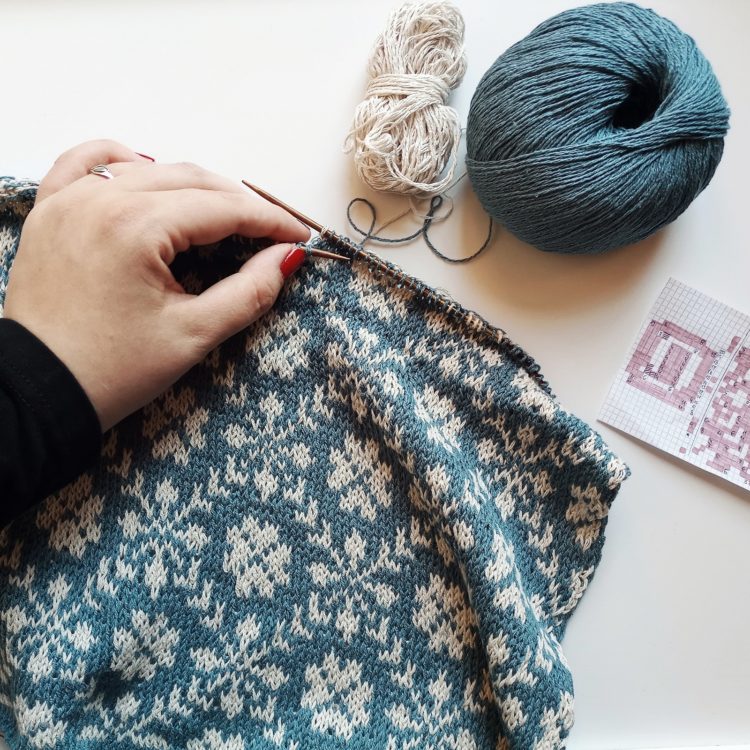
My baby blanket designs are all inspired by different things and include English Garden, Feathers and Oak Leaf patterns. I designed the English Garden pattern in preparation for the arrival of a friend’s baby. They were living in England at the time and I used a book of traditional English knitting patterns as a reference for part of the motif. I thought the repeated damask floral pattern felt suitably like a piece of luxury bedding for a baby.
Colourwork knitting can often be intimidating for beginners because of how much additional fiddling needs to be done to keep all colours in play.
Feathers and Oak Leaves were both experiments in creating an effective visual design that required a limited amount of yarn carried behind the work.
Feathers concentrates the carrying in selected sets of rows and Oak Leaves is an introduction to the intarsia method.
Setting some limitations, whether they’re necessary or artificial, often drives me to take interesting approaches or rethink the way I might have made something. The windows of the Copenhagen Building Blocks are a good example. When I set out designing the blocks, beginning with the tea shop with tea canisters in the window, it became clear that the detail was both an unnecessary complication and a distraction.
Instead, I tried to reduce the windows to the simplest form I could without losing the distinctive tall shape. The silhouetted version in dark grey ended up being the most practical, and because it’s used across every block, it also has a unifying effect on the colourful movement of the many facades.
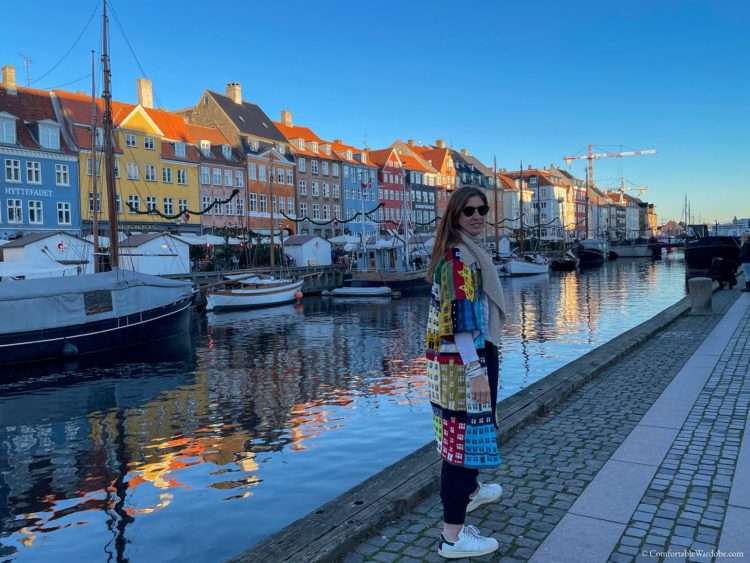
One of the best things about publishing my patterns on Ravelry has been seeing the way other people interpret and adapt them to express their own ideas.
I’ve posted some on my Instagram: a long coat, made by Anna Lisa McBride of @comfortablewardrobe in Copenhagen that she and her mother adapted during lockdown from my building blocks patterns. Then there’s a pair of socks made from the same pattern by Marja-Leena Kejonen of Finland, @lenkura on Instagram. They’ve simply transposed my colourwork patterns onto the shape of a different garment. It’s very impressive.
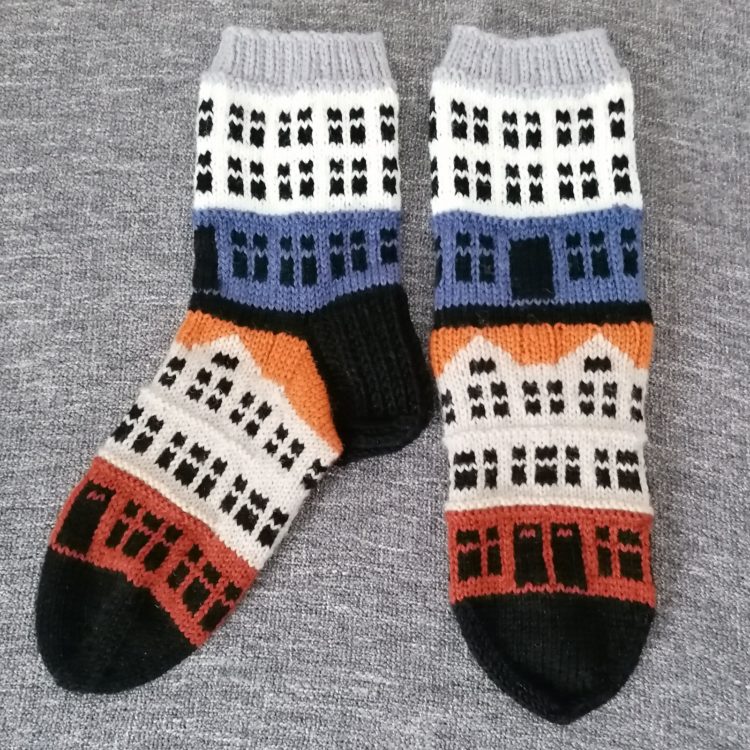
We’ve heard how Jake started out as a beginner, learned his skills from friends and relatives, and began designing his own patterns. He’s shown us that it’s possible for anyone – you simply have to begin. Here are some of his recommendations for knitters who want to start designing.
Jake is a designer who is self-taught at knit and crochet, and also incorporates patchwork. He lives in Sydney, Australia and works as a secondary school teacher. He has been practising and exhibiting his knitted and crocheted work internationally since 2006.
Instagram: @boy_knits_world
Ravelry: www.ravelry.com/patterns
If you enjoyed this article, read about Mulyana, an Indonesian artist who uses playful crochet to create fun characters inspired by the television shows of his youth.
Would you like to knit or crochet and adapt someone else’s designs or even design your own?
We’d love to know. Leave a comment in the box below.